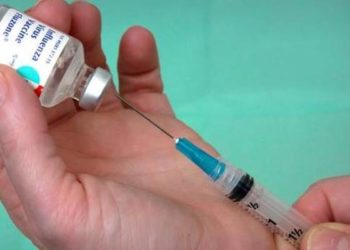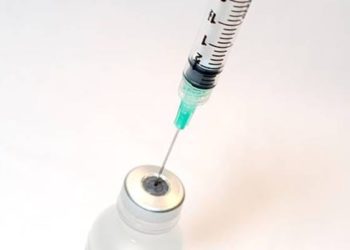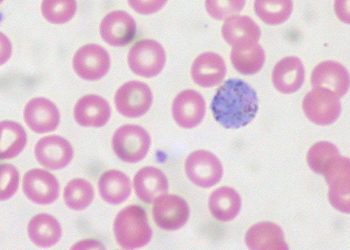Pro-vaccine messages not associated with increased vaccination intent
Image: US Navy/PD
1. Corrective information successfully changed misconceptions about the measles-mumps-rubella (MMR) vaccine causing autism, although the message was linked to decreased vaccination intent among parents with the least favorable vaccine attitudes.
2. Messages emphasizing the risks of vaccine-preventable diseases were not linked to improved vaccination intent.
Evidence Rating Level: 1 (Excellent)
Study Rundown: Recent media attention surrounding discredited safety claims of the measles-mumps-rubella (MMR) vaccine has likely influenced vaccination rates across the United States. There are increased concerns about MMR, requests for vaccine exemptions, and for alternative vaccination schedules, putting children at risk for measles. While physicians and public health agencies agree that maintaining high MMR immunization rates is a public health priority, little is known about which pro-vaccine messages are effective among resistant parents. The current study evaluated the effects of 4 pro-vaccine messages: 1) correcting misinformation, 2) presenting information on disease risks, 3) using dramatic narratives, or 4) displaying visuals to make the risks more salient. Results indicate that corrective information successfully changed misconceptions about MMR causing autism, but reduced vaccination intent among parents with the least favorable vaccine attitudes. Furthermore, messages emphasizing the risks of vaccine-preventable diseases were found to be ineffective in promoting vaccination intent. No intervention increased vaccination intent among those parents who were the least favorable toward vaccines. This study was limited by the use of self-report measures regarding vaccine beliefs and intent, rather than vaccine receipt. It is important to continue to test vaccination messages and their effects among skeptical populations in order to find the most effective way to address anti-vaccine sentiments.
Click to read the study published today in Pediatrics
Relevant Reading: Fear, misinformation, and innumerates: how the Wakefield paper, the press, and advocacy groups damaged the public health.
In-Depth [randomized controlled study]: Study participants were taken from the nationally representative Knowledge Networks online panel, consisting of 1759 parents with children younger than 18 years of age. The study was conducted in 2 waves, with respondents first completing pre-intervention self-report measures of health and vaccine attitudes, followed by random assignment to receive 1 of 4 pro-vaccine messages or a control message. The 4 pro-vaccine messages included commonly used strategies by public health agencies: 1) correcting misinformation (“Autism correction”), 2) presenting information on disease risks (“Disease risks”), 3) using dramatic narratives of a mother recounting her infant’s hospitalization with measles (“Disease narrative”), or 4) displaying pictures of the diseases to make the risks more salient (“Disease images”). The control condition consisted of delivering information about bird feeding. Outcome measures included general misperceptions about vaccines causing autism, perceived MMR side effects, and likehood of giving MMR to a future child. The “Autism correction” intervention was associated with decreased odds of agreeing that “some vaccines cause autism in healthy children” (aOR = 0.55; 95% CI, 0.38-0.79), although it was linked to decreased vaccination intent among parents with the least favorable vaccine attitudes (aOR = 0.36; 95% CI, 0.20-0.64). The “Disease risks” intervention had no effect on the belief that “Vaccines cause autism” or regarding “MMR side effects”. “Disease narrative” actually increased beliefs in the likelihood of adverse effects from MMR (aOR = 1.92; 95% CI, 1.33-2.77). Similarly, “Disease images” was linked to increased odds of believing that vaccines cause autism (aOR = 1.47; 95% CI, 1.02-2.13), possibly due to a danger-priming effect.
More from this author: Homosexual adolescent males more likely to misuse steroids; Firearm-related hospitalizations in children represent a heavy burden; Intentional injuries leading to ED visits often occur at school; Sexting linked to other sexual behaviors among teens; Revised autism screening tool (M-CHAT-R/F) may allow for earlier diagnosis
©2012-2014 2minutemedicine.com. All rights reserved. No works may be reproduced without expressed written consent from 2minutemedicine.com. Disclaimer: We present factual information directly from peer reviewed medical journals. No post should be construed as medical advice and is not intended as such by the authors, editors, staff or by 2minutemedicine.com. PLEASE SEE A HEALTHCARE PROVIDER IN YOUR AREA IF YOU SEEK MEDICAL ADVICE OF ANY SORT.







